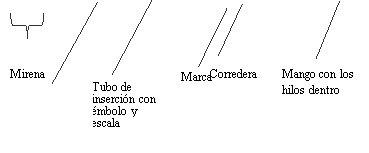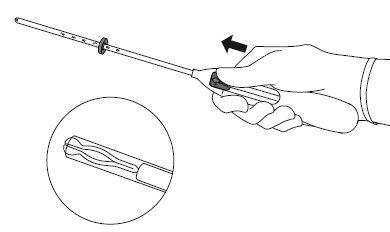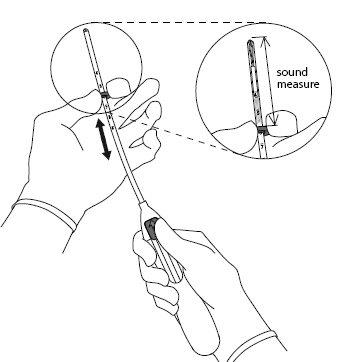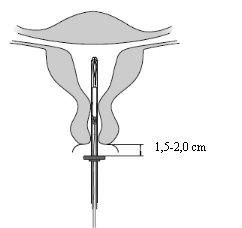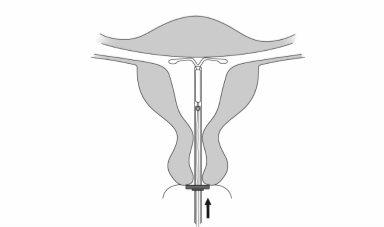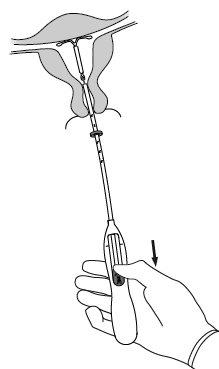
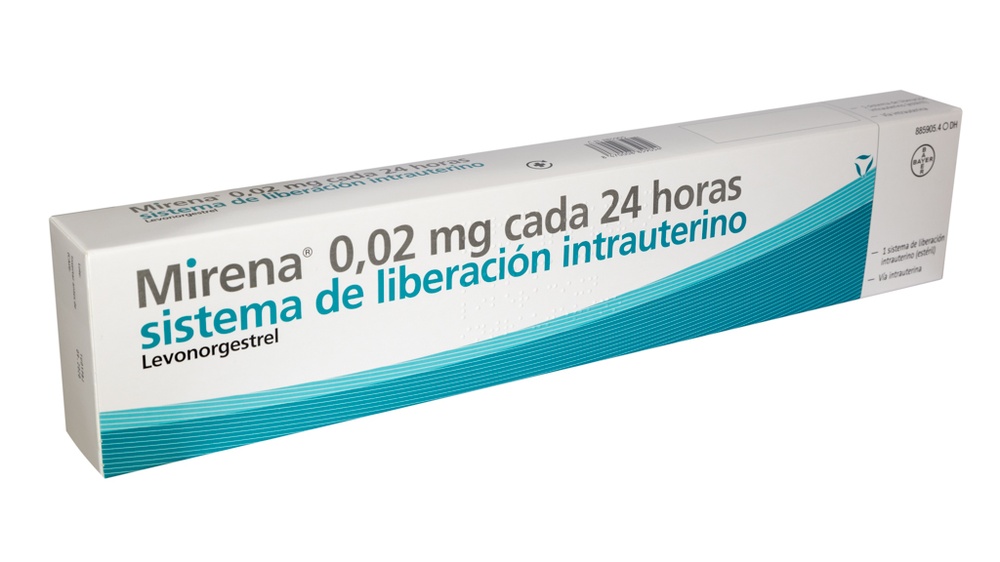
МИРЕНА 0,02 мг КАЖДЫЕ 24 ЧАСА ВНУТРИМАТЕРОЧНАЯ СИСТЕМА С ПРОДОЛЖИТЕЛЬНЫМ ВЫСВОБОЖДЕНИЕМ


Инструкция по применению МИРЕНА 0,02 мг КАЖДЫЕ 24 ЧАСА ВНУТРИМАТЕРОЧНАЯ СИСТЕМА С ПРОДОЛЖИТЕЛЬНЫМ ВЫСВОБОЖДЕНИЕМ
Введение
Инструкция: информация для пациентки
Мирена0,02 мг каждые 24 часа система внутриматочной доставки
Левоноргестрел
Прочитайте внимательно всю инструкцию перед началом использования этого препарата, поскольку она содержит важную информацию для вас.
|
Содержание инструкции
- Что такое Мирена и для чего она используется
- Что вам нужно знать перед началом использования Мирены
- Как использовать Мирену
- Возможные побочные эффекты
- Хранение Мирены
- Содержание упаковки и дополнительная информация
1. Что такое Мирена и для чего она используется
Мирена - это система внутриматочной доставки (СВД) с формой буквы Т, которая после введения выпускает в матку гормон левоноргестрел. Целью использования корпуса в форме буквы Т является его соответствие форме матки. Вертикальная часть белого корпуса в форме буквы Т содержит резервуар для препарата, который включает левоноргестрел. В нижней части вертикальной части имеется петля, к которой прикреплены два коричневых нити для удаления.
Мирена используется для предотвращения беременности (контрацепции) и чрезмерного маточного кровотечения (идиопатической menorragii).
Девочки и подростки
Мирена не показана для использования до первой менструации (менархе).
2. Что вам нужно знать перед началом использования Мирены
Общие заметки Перед началом использования Мирены ваш врач задаст вам несколько вопросов о вашей личной и семейной медицинской истории. В этой инструкции описаны различные ситуации, в которых Мирена должна быть удалена или когда ее надежность может снизиться. В таких ситуациях вы не должны иметь половые контакты или должны принимать дополнительные не гормональные контрацептивные меры, например, использовать презерватив или другой барьерный метод. Не используйте метод ритма или метод температуры. Эти методы могут быть ненадежными, поскольку Мирена изменяет ежемесячные изменения температуры тела и шейной слизи. Как и другие гормональные контрацептивы, Мирена не защищает от заражения ВИЧ (СПИД) или других заболеваний, передающихся половым путем. |
Не используйте Мирену, если у вас есть какие-либо из следующих ситуаций:
- Беременность или подозрение на нее
- Опухоли, которые зависят от прогестогенных гормонов для развития, например, рак молочной железы
- Текущая или рецидивирующая воспалительная болезнь таза (инфекция женских репродуктивных органов)
- Инфекция шейки матки
- Инфекция нижней половой трети
- Инфекция матки после родов
- Инфекция матки после аборта в течение последних 3 месяцев
- Ситуации, связанные с повышенной чувствительностью к инфекциям
- Аномалии клеток шейки матки
- Рак матки или шейки матки, или подозрение на него
- Аномальное маточное кровотечение неизвестной причины
- Аномалии шейки матки или матки, включая миомы, если они деформируют полость матки
- Острое заболевание печени или опухоль печени
- Аллергия на левоноргестрел или любой другой компонент этого препарата (включая раздел 6).
Предостережения и меры предосторожности
Проконсультируйтесь с вашим врачом перед началом использования Мирены.
Если у вас есть какие-либо из следующих ситуаций или если они появляются впервые во время использования Мирены, проконсультируйтесь с специалистом, чтобы решить, следует ли продолжать использовать Мирену или удалить систему:
- Мигрень, асимметричная потеря зрения или другие симптомы, которые могут указывать на транзиторную ишемию мозга (временную блокировку поступления крови к мозгу)
- Чрезвычайно сильная головная боль
- Желтуха (желтый цвет кожи, белого глаза и/или ногтей)
- Значительное повышение артериального давления
- Тяжелые артериальные заболевания, такие как инсульт или сердечный приступ
- Острое образование тромбов в венах.
Мирена должна использоваться с осторожностью у женщин с врожденными пороками сердца или заболеваниями сердечных клапанов с риском инфекционного воспаления сердечной мышцы.
У женщин с диабетом, использующих Мирену, следует контролировать уровень глюкозы в крови.
Нерегулярные кровотечения могут скрыть некоторые симптомы и признаки эндометриальных полипов или рака, и в этих случаях следует рассмотреть возможность проведения диагностических тестов.
Осмотр/консультация врача
Предварительный осмотр перед введением может включать цитологию шейки матки (мазок Папаниколау), осмотр молочных желез и другие тесты, например, на инфекции, включая заболевания, передающиеся половым путем, тест на беременность, если это необходимо. Следует провести гинекологический осмотр, чтобы определить положение и размер матки.
Мирена не должна использоваться в качестве экстренного контрацептива (послекоитального контрацептива).
Инфекции
Трубка для введения помогает предотвратить загрязнение Мирены микроорганизмами во время введения, и вводимый прибор Мирены был разработан для минимизации риска инфекций. Однако у пользователей внутриматочных устройств (ВМУ) из меди существует более высокий риск инфекции таза сразу после введения и в течение месяца после него. Инфекции таза у пользователей СВД часто связаны с заболеваниями, передающимися половым путем. Риск инфекции увеличивается, если женщина или ее партнер имеют несколько половых партнеров одновременно. Инфекции таза должны быть лечены быстро. Инфекция таза может повлиять на фертильность и увеличить риск будущей внематочной беременности (беременности вне матки).
В крайне редких случаях может произойти тяжелая инфекция или сепсис (тяжелая инфекция, которая может быть смертельной) вскоре после введения.
Мирена должна быть удалена, если происходят повторные инфекции таза, инфекции слизистой оболочки матки или если острая инфекция тяжелая или не реагирует на лечение в течение нескольких дней.
Немедленно проконсультируйтесь с вашим врачом, если у вас есть постоянная боль в нижней части живота, лихорадка, боль во время полового контакта или аномальное кровотечение.
Исключение
Маточные сокращения во время менструации иногда могут вытолкнуть СВД из его положения или исключить его. Это более вероятно, если у вас есть избыточный вес на момент введения СВД или если у вас есть история обильных менструаций. Если СВД выйдет из положения, оно может не функционировать должным образом, и, следовательно, риск беременности увеличивается. Если СВД исключено, вы больше не защищены от беременности.
Возможные симптомы исключения - боль и аномальное кровотечение, но Мирена также может быть исключена без вашего ведома. Поскольку Мирена снижает маточное кровотечение, увеличение кровотечения может быть указанием на исключение.
Рекомендуется, чтобы вы проверили нити пальцами, например, во время душа. См. также раздел 3 «Как использовать Мирену - Как я могу знать, что Мирена правильно установлена?». Если у вас есть признаки, указывающие на исключение, или если вы не можете почувствовать нити, вам следует использовать дополнительный контрацептивный метод (например, презерватив) и проконсультироваться с вашим медицинским специалистом.
Прокол
Прокол или проникновение в стенку матки может произойти чаще во время введения, хотя оно может быть обнаружено позже. Мирена, которая находится вне полости матки, неэффективна для предотвращения беременности и должна быть удалена как можно скорее. Может потребоваться хирургическое вмешательство для удаления Мирены. Риск прокола увеличивается у женщин в период лактации и у женщин, которые родили до 36 недель до введения, и может увеличиться у женщин с фиксированным и откинутым назад маткой (фиксированной маткой). Если вы подозреваете, что произошел прокол, немедленно проконсультируйтесь с вашим врачом и напомните ему, что у вас введена Мирена, особенно если это не тот человек, который ее ввел.
Возможные признаки и симптомы прокола могут включать:
- сильную боль (podobную менструальным спазмам) или более сильную боль, чем обычно
- обильное кровотечение (после введения)
- боль или кровотечение, которые сохраняются более нескольких недель
- внезапное изменение менструального цикла
- боль во время полового контакта
- невозможность нахождения нитей Мирены (см. раздел 3 «Как использовать Мирену - Как я могу знать, что Мирена правильно установлена?»)
Внематочная беременность
Очень маловероятно, что вы сможете забеременеть во время использования Мирены. Однако, если вы забеременели во время использования Мирены, риск того, что плод разовьется вне матки (внематочная беременность), относительно увеличен. Около 1 из 1000 женщин в год, правильно использующих Мирену, имеют внематочную беременность. Это меньше, чем у женщин, которые не используют никаких контрацептивных мер (около 3-5 из 1000 женщин в год). Женщина, которая уже имела внематочную беременность, операцию на фаллопиевых трубах или инфекцию таза, имеет более высокий риск. Внематочная беременность - это серьезная ситуация, требующая немедленного медицинского внимания. Следующие симптомы могут указывать на то, что у вас внематочная беременность, и вам следует немедленно обратиться к врачу:
- Если у вас прекратилась менструация, но затем началось постоянное кровотечение или боль
- Если у вас есть боль в нижней части живота или очень сильная боль
- Если у вас есть нормальные признаки беременности, но у вас также есть кровотечение и вы чувствуете себя плохо.
Головокружение
Некоторые женщины чувствуют головокружение после введения Мирены. Это нормальная физиологическая реакция. Ваш врач укажет вам отдохнуть немного после введения Мирены.
Увеличенные фолликулы яичников (клетки, окружающие созревший ооцит в яичнике)
Поскольку противозачаточный эффект Мирены в основном локальный, у женщин детородного возраста обычно происходят овуляторные циклы с фолликулярным разрывом. В некоторых случаях дегенерация фолликула задерживается, и его развитие может продолжаться. Большинство этих фолликулов не вызывают симптомов, хотя некоторые могут сопровождаться тазовой болью или болью во время полового контакта. Эти увеличенные фолликулы могут потребовать медицинского внимания, хотя обычно они проходят самостоятельно.
Психиатрические расстройства
Некоторые женщины, использующие гормональные контрацептивы, такие как Мирена, сообщали о депрессии или депрессивном состоянии. Депрессия может быть тяжелой и иногда может вызывать суицидальные мысли. Если вы испытываете изменения настроения и депрессивные симптомы, проконсультируйтесь с вашим врачом для получения дополнительных медицинских рекомендаций как можно скорее.
Другие препараты и Мирена
Механизм действия Мирены в основном локальный, и не ожидается, что прием других препаратов увеличит риск беременности во время использования Мирены. Однако проконсультируйтесь с вашим врачом, если вы принимаете или недавно принимали любой другой препарат, включая препараты, приобретенные без рецепта.
Беременность, лактация и фертильность
Беременность
Мирена не должна использоваться во время беременности или подозрения на нее.
Очень редко женщина может забеременеть с введенной Миреной. Но если Мирена выйдет из положения, вы больше не будете защищены, и вам следует использовать другой контрацептивный метод до тех пор, пока вы не проконсультируетесь с вашим врачом.
У некоторых женщин может прекратиться менструация во время использования Мирены. Отсутствие менструации не обязательно является признаком беременности. Если у вас нет менструации и у вас также есть другие симптомы беременности (например, тошнота, усталость, напряжение в груди), посетите вашего врача для осмотра и теста на беременность.
Если вы забеременели с введенной Миреной, вам следует немедленно обратиться к вашему медицинскому специалисту для удаления Мирены. Удаление может вызвать аборт. Однако, если Мирена остается на месте во время беременности, не только увеличивается риск спонтанного аборта, но и риск преждевременных родов. Если Мирена не может быть удалена, проконсультируйтесь с вашим медицинским специалистом о преимуществах и рисках продолжения беременности. Если беременность продолжается, вас будут внимательно наблюдать во время беременности, и вам следует немедленно обратиться к врачу, если вы испытываете боли в животе, боли в животе или лихорадку.
Мирена содержит гормон левоноргестрел, и были сообщения о случаях воздействия на гениталии девочек, если они подвергаются воздействию внутриматочных устройств с левоноргестрелом во время пребывания в матке.
Лактация
Мирена может использоваться во время лактации. Левоноргестрел был обнаружен в небольших количествах в молоке кормящих женщин (0,1% дозы передается ребенку). Когда Мирена используется, начиная с 6 недель после родов, она, кажется, не имеет негативных эффектов на рост и развитие ребенка. Препараты только с прогестагенами, кажется, не влияют на количество и качество грудного молока.
Гормональные контрацептивы не рекомендуются в качестве метода контрацепции первой линии во время лактации; только не гормональные методы считаются таковыми, за которыми следуют методы контрацепции только с прогестагенами, такие как Мирена. Дневная доза и концентрация левоноргестрела в крови меньше, чем у любого другого гормонального контрацептивного препарата.
Фертильность
После удаления Мирены женщины восстанавливают свою нормальную фертильность.
Если вы беременны, кормите грудью или думаете, что могли забеременеть, или планируете забеременеть, проконсультируйтесь с вашим врачом или фармацевтом перед использованием этого препарата.
Вождение и использование машин
Не было обнаружено никаких эффектов.
Мирена содержит сульфат бария
Структура Мирены в форме буквы Т содержит сульфат бария, который делает ее видимой на рентгеновском снимке.
3. Как использовать Мирену
Какова эффективность Мирены?
В качестве контрацептива Мирена так же эффективна, как и современные медные ВМС. Исследования (клинические испытания) показали, что в течение первого года использования Мирены у примерно 2 из 1000 женщин, использующих Мирену, произошли беременности.
При лечении идиопатической menorragии Мирена вызывает значительное уменьшение менструального кровотечения после трех месяцев использования. У некоторых женщин менструация полностью прекращается.
Когда следует вставлять Мирену?
Начало использования Мирены
- Прежде чем вставлять Мирену, необходимо убедиться, что женщина не беременна.
- Мирена должна быть вставлена в течение 7 дней после начала менструации. Если Мирена вставлена в течение этих дней, она начинает работать сразу после вставления и предотвращает беременность.
- Если Мирену невозможно вставить в течение 7 дней после начала менструации или если менструальный цикл нерегулярный, то Мирену можно вставить в любой другой день. В этом случае женщина не должна иметь незащищенных половых контактов с момента последней менструации и должна иметь отрицательный тест на беременность перед вставлением. Кроме того, Мирена может не обеспечивать надежную защиту от беременности с момента вставления. Поэтому необходимо использовать барьерный метод контрацепции (например, презерватив) или воздержаться от вагинальных половых контактов в течение 7 дней после вставления Мирены.
- Мирена не предназначена для использования в качестве экстренного контрацептива (послекоитального контрацептива).
Начало использования Мирены после родов
- Мирена может быть вставлена после родов, когда матка вернулась к нормальному размеру, но не раньше чем через 6 недель после родов (см. раздел 2 «Что нужно знать перед началом использования Мирены – Перфорация»).
- Также см. «Начало использования Мирены» выше, чтобы узнать, что еще нужно знать в момент вставления.
Начало использования Мирены после аборта
Мирена может быть вставлена сразу после аборта, если беременность продолжалась менее 3 месяцев и нет генитальных инфекций. Мирена начнет работать сразу после вставления.
Замена Мирены
Мирена может быть заменена на новую в любой момент менструального цикла. Мирена начнет работать сразу после вставления.
Переход от другого метода контрацепции (например, гормональных контрацептивов, имплантатов)
- Мирена может быть вставлена сразу, если можно убедиться, что женщина не беременна.
- Если прошло более 7 дней после начала менструального кровотечения, необходимо воздержаться от вагинальных половых контактов или использовать дополнительные барьерные методы контрацепции в течение 7 дней.
Как вставляется Мирена?
Мирена должна быть вставлена медицинским специалистом, имеющим опыт вставления Мирены.
После гинекологического осмотра в вагину вводится инструмент, называемый спекулумом, и шейка матки очищается антисептическим раствором. Мирена вставляется в матку через тонкий и гибкий пластиковый тубус (вставлятор). Перед вставлением можно применить местную анестезию на шейке матки, если необходимо.
Некоторые женщины могут испытывать боль и головокружение после вставления. Если эти симптомы не проходят в течение 30 минут после отдыха, это может быть связано с тем, что Мирена не находится в правильном положении. В этом случае необходимо провести осмотр и удалить Мирену, если необходимо.
После вставления Мирены врач должен предоставить женщине карточку напоминания для посещений. Женщина должна взять эту карточку на каждое посещение.
Когда мне нужно обратиться к врачу?
Женщина должна проверить Мирену через 4-12 недель после вставления и затем регулярно,至少 один раз в год. Врач определит частоту и тип осмотров, подходящих для индивидуального случая. Женщина должна взять карточку напоминания, предоставленную врачом, на каждое посещение.
Кроме того, женщина должна обратиться к врачу, если发生 любая из следующих ситуаций:
- Если она больше не чувствует нитей Мирены во влагалище
- Если она может чувствовать нижнюю часть системы
- Если она думает, что беременна
- Если у нее есть длительная боль в животе, лихорадка или необычные вагинальные выделения
- Если она или ее партнер испытывают боль или дискомфорт во время половых контактов
- Если у нее произошли внезапные изменения в менструальном цикле (например, если она имела скудное или отсутствующее менструальное кровотечение и вдруг начала кровоточить постоянно, или чувствовала боль, или начала кровоточить обильно)
- Если у нее произошли другие проблемы со здоровьем, такие как мигренозные головные боли или сильные головные боли, повторяющиеся проблемы со зрением, желтуха или повышение артериального давления
- Если у нее произошли какие-либо заболевания, упомянутые в разделе 2 «Что нужно знать перед началом использования Мирены».
Женщина должна напомнить врачу, что у нее вставлена Мирена, особенно если это не тот врач, который ее вставил.
Как долго можно использовать Мирену?
Мирена эффективна в течение 8 лет, когда используется для предотвращения беременности (контрацепции). Использует ли женщина Мирену по этой причине? Если да, то Мирена должна быть удалена или заменена через 8 лет.
Мирена эффективна в течение 5 лет для лечения обильного менструального кровотечения (идиопатической menorragии). Использует ли женщина Мирену по этой причине? Если да, то Мирена должна быть удалена или заменена, когда обильное менструальное кровотечение возобновится или через 8 лет.
Если женщина желает, можно вставить новую Мирену, когда старая будет удалена.
Что происходит, если я хочу забеременеть или удалить Мирену по любой другой причине?
Мирена может быть легко удалена врачом в любой момент, после чего беременность станет возможной. Удаление, как правило, является безболезненным процедурой. После удаления Мирены фертильность женщины восстанавливается.
Продолжение контрацепции после удаления
Если женщина не желает забеременеть, Мирена не должна быть удалена после 7-го дня менструального цикла (менструации), если не обеспечена контрацепция другими методами (например, презервативами) в течение как минимум 7 дней до удаления. Если у женщины нерегулярные менструации (менструальный цикл) или она не имеет менструаций, ей необходимо использовать барьерные методы контрацепции в течение 7 дней до удаления и до тех пор, пока менструация не возобновится. Также можно вставить новую Мирену сразу после удаления; в этом случае не требуется дополнительная защита. Если женщина не желает продолжать использовать тот же метод контрацепции, она должна проконсультироваться с врачом о других надежных методах контрацепции.
Могу ли я забеременеть после прекращения использования Мирены?
Да. После удаления Мирены она не будет препятствовать нормальной фертильности женщины. В течение первого менструального цикла после удаления Мирены женщина может забеременеть.
Может ли Мирена повлиять на мои менструации?
Мирена влияет на менструальный цикл женщины. Она может изменить менструации так, что женщина будет иметь скудное или отсутствующее менструальное кровотечение, более короткие или более длинные менструации, легкое или обильное кровотечение или отсутствие кровотечения.
В течение 3-6 первых месяцев после вставления Мирены многие женщины испытывают, кроме менструаций, частое легкое кровотечение или скудное кровотечение. Некоторые женщины в это время могут иметь обильное или длительное кровотечение. Пожалуйста, сообщите врачу, особенно если это состояние сохраняется.
В целом, женщина, скорее всего, будет иметь постепенное уменьшение количества дней кровотечения, а также уменьшение количества потерянной крови каждый месяц. Некоторые женщины со временем заметят, что их менструация полностью прекращается. Поскольку Мирена обычно уменьшает количество менструального кровотечения, большинство женщин испытывают увеличение уровня гемоглобина в крови.
Когда система удаляется, менструация восстанавливается.
Является ли отсутствие менструации аномалией?
Нет, когда женщина использует Мирену. Если женщина заметит, что у нее нет менструации во время использования Мирены, это связано с влиянием гормона на слизистую оболочку матки. Не происходит ежемесячного утолщения слизистой оболочки. Следовательно, нет ничего, что могло бы выйти в виде менструации. Это не означает, что женщина достигла менопаузы или беременна. Ее собственные гормональные уровни остаются нормальными.
Фактически, отсутствие менструации может быть большим преимуществом для здоровья женщины.
Как я могу узнать, беременна ли я?
Беременность маловероятна у женщин, использующих Мирену, даже если у них нет менструации.
Если в течение 6 недель у женщины не было менструации и она обеспокоена, она должна рассмотреть возможность проведения теста на беременность. Если тест отрицательный, нет необходимости проводить повторный тест, если только у нее не появятся другие признаки беременности, например, тошнота, усталость или напряжение в груди.
Может ли Мирена вызвать боль или дискомфорт?
Некоторые женщины испытывают боль (например, менструальные спазмы) в течение первых недель после вставления. Женщина должна вернуться к врачу или клинике, если она испытывает сильную боль или если боль сохраняется более 3 недель после вставления Мирены.
Может ли Мирена повлиять на половые контакты?
Ни женщина, ни ее партнер не должны чувствовать Мирену во время половых контактов. Если это не так, необходимо избегать половых контактов до тех пор, пока врач не проверит, что Мирена находится в правильном положении.
Сколько времени мне нужно подождать после вставления Мирены, прежде чем вступить в половые контакты?
Чтобы дать организму отдых, лучше подождать 24 часа после вставления Мирены, прежде чем вступать в половые контакты. В зависимости от момента менструального цикла, когда Мирена была вставлена, может быть необходимо использовать барьерный метод контрацепции (например, презерватив) или воздержаться от половых контактов в течение 7 дней после вставления (см. раздел 3 «Как использовать Мирену – Когда следует вставлять Мирену?»).
Можно ли использовать тампоны или менструальные чашки?
Рекомендуется использовать прокладки. Если используются тампоны или менструальные чашки, необходимо менять их осторожно, чтобы не потянуть за нити Мирены. Если женщина считает, что она могла переместить Мирену из ее положения (см. «Когда мне нужно обратиться к врачу?», чтобы узнать возможные признаки), необходимо избегать половых контактов или использовать барьерный метод контрацепции (например, презерватив) и обратиться к врачу.
Что происходит, если Мирена выйдет?
Редко, но возможно, что Мирена может выйти во время менструации, и женщина может не заметить этого. Необычное увеличение количества кровотечения во время менструации может означать, что Мирена полностью вышла через вагину. Также возможно, что часть Мирены может выйти из матки (женщина и ее партнер могут заметить это во время половых контактов). Если Мирена полностью или частично вышла, женщина не будет защищена от беременности.
Как я могу узнать, что Мирена находится в правильном положении?
Женщина может проверить, находятся ли нити Мирены на месте. Она должна осторожно ввести палец во влагалище и почувствовать нити Мирены в конце влагалища, gầnко входа в матку (шейка матки).
Не тяните за нити Мирены, поскольку это может вызвать случайное удаление Мирены. Если женщина не может найти нити Мирены, это может указывать на то, что произошла экспульсия или перфорация. В этом случае необходимо использовать барьерный метод контрацепции (например, презерватив) и обратиться к врачу.
4. Возможные побочные эффекты
Как и все лекарства, это лекарство может вызывать побочные эффекты, хотя не все люди испытывают их.
Помимо возможных побочных эффектов, описанных в других разделах (например, раздел 2 «Что нужно знать перед началом использования Мирены»), ниже перечислены возможные побочные эффекты в зависимости от частей тела, которые они поражают, и их частоты:
Очень частые побочные эффекты:могут возникать у более 1 из 10 человек:
Расстройства репродуктивной системы и молочной железы
- Кровотечение из матки или влагалища, включая скудное кровотечение, нерегулярные менструации (олигоменорея) и отсутствие кровотечения (аменорея)
- Доброкачественные кисты яичников (см. раздел 2 «Увеличенные фолликулы яичников»)
Частые побочные эффекты:могут возникать у до 1 из 10 человек:
Психиатрические расстройства
- Депрессивное настроение или депрессия
- Нервозность
- Уменьшение либидо
Расстройства нервной системы
- Головная боль
Сосудистые расстройства
- Головокружение
Расстройства желудочно-кишечного тракта
- Боль в животе
- Тошнота (чувство головокружения)
Расстройства кожи и подкожной ткани
- Акне
Расстройства мышечно-скелетной системы, соединительной ткани и костей
- Боль в спине
Расстройства репродуктивной системы и молочной железы
- Боль в тазу
- Дисменорея (болезненная менструация)
- Вагинальные выделения
- Вульвовагинит (воспаление внешних половых органов или влагалища)
- Напряжение в груди
- Боль в груди
- Экспульсия внутриматочного контрацептива
Дополнительные исследования
- Увеличение веса
Редкие побочные эффекты:могут возникать у до 1 из 100 человек:
Расстройства нервной системы
- Мигрень
Расстройства желудочно-кишечного тракта
- Увеличение объема живота
Расстройства кожи и подкожной ткани
- Гирсутизм (избыточный рост волос на теле)
- Потеря волос (алопеция)
- Зуд (сильный зуд)
- Экзема (воспаление кожи)
- Хлоазма (пятна желтовато-коричневого цвета на коже) или гиперпигментация кожи
Расстройства репродуктивной системы и молочной железы
- Перфорация матки
- Воспалительное заболевание тазовых органов (инфекция верхней половой системы, структур над шейкой матки)
- Эндометрит
- Цервицит/нормальный Пап-тест, класс II (воспаление шейки матки)
Общие расстройства и местные реакции
- Отек (отек)
Очень редкие побочные эффекты:могут возникать у до 1 из 1000 человек:
Расстройства кожи и соединительной ткани
- Сыпь
- Крапивница (пятна)
Если женщина забеременеет во время использования Мирены, существует риск того, что беременность может развиваться вне матки (см. раздел 2 «Беременность вне матки»).
Были зарегистрированы случаи септикемии (тяжелой системной инфекции, которая может быть смертельной) после вставления ВМС.
Сообщение о побочных эффектах
Если женщина испытывает любой побочный эффект, она должна обратиться к врачу, фармацевту или медсестре, даже если это возможные побочные эффекты, не указанные в этом описании. Также можно сообщить о них напрямую через систему мониторинга безопасности лекарственных средств: https://www.notificaram.es. Сообщая о побочных эффектах, женщина может внести свой вклад в предоставление более полной информации о безопасности этого лекарства.
5. Хранение Мирены
Хранить это лекарство в недоступном для детей месте.
Не требует специальных условий хранения.
Не использовать это лекарство после истечения срока годности, указанного на упаковке. Срок годности – последний день месяца, указанного на упаковке.
Лекарства не должны выбрасываться в канализацию или мусор. Пустые упаковки и ненужные лекарства следует сдавать в аптеку. В случае сомнений необходимо обратиться к фармацевту за консультацией о том, как утилизировать упаковки и лекарства. Таким образом, можно помочь защитить окружающую среду.
6. Содержание упаковки и дополнительная информация
Состав Мирены
- Активное вещество - левоноргестрел. Система внутриматочной доставки содержит 52 мг левоноргестрела.
- Другие компоненты - эластомер полидиметилсилоксана, коллоидный безводный диоксид кремния, полиэтилен, сульфат бария и оксид железа.
Внешний вид продукта и содержание упаковки
Содержание упаковки: стерильная внутриматочная система доставки для внутриматочного использования.
Владелец разрешения на маркетинг
Bayer Hispania, S.L.
Av. Baix Llobregat 3-5
08970 Sant Joan Despí (Barcelona)
Испания
Производитель
Bayer Oy
Pansiontie 47
20210 Turku
Финляндия
Для получения любой информации о этом лекарственном средстве, пожалуйста, свяжитесь с владельцем разрешения на маркетинг:
Bayer Hispania, S.L.
Av. Baix Llobregat 3-5
08970 Sant Joan Despí (Barcelona)
Испания
ЕСЛИ У ВАС ЕСТЬ КАКИЕ-ЛИБО ДОПОЛНИТЕЛЬНЫЕ ВОПРОСЫ, ПОЖАЛУЙСТА, ОБРАТИТЕСЬ К СВОЕМУ ВРАЧУ ИЛИ ФАРМАЦЕВТУ.
Дата последнего обзора этого листка инструкции:Май 2024
Подробная информация о этом лекарственном средстве доступна на сайте Агентства по лекарственным средствам и медицинским изделиям Испании (AEMPS) (http://www.aemps.gob.es/). Другие источники информации
Вы можете получить доступ к подробной и актуальной информации о этом лекарственном средстве, отсканировав код QR, включенный в листок инструкции, картонную упаковку и напоминание для пациента, с помощью своего мобильного телефона (смартфона). Вы также можете получить доступ к этой информации на следующем сайте: https://cima.aemps.es/info/63158
--------------------------------------------------------------------------------------------------------------------------
Следующая информация предназначена только для медицинских специалистов:
ИНСТРУКЦИИ ПО ВСТАВKE
Мирена 0,02 мг каждые 24 часа система внутриматочной доставки
Ее должна вставлять медицинский специалистник, используя асептическую технику.
Мирена поставляется в стерильной упаковке, которую не следует открывать до момента использования. Не стерилизовать повторно. Как поставляется, Мирена предназначена для одноразового использования. Не использовать, если внутренняя упаковка повреждена или открыта. Не вставлять после месяца и года истечения срока годности, указанных на этикетке.
Для выбора момента вставки проконсультируйтесь с техническим описанием Мирены.
Мирена включает в себя напоминание для пациента в упаковке. Заполните напоминание для пациента и передайте его пациенту после вставки.
Подготовка к вставке
- Осмотрите пациента, чтобы исключить противопоказания для вставки Мирены и чтобы исключить беременность (см. Техническое описание, раздел 4.3 и раздел 4.4 под Осмотр/медицинская консультация).
- Вставьте спекулум, визуализируйте шейку матки и затем тщательно очистите шейку матки и влагалище подходящим антисептическим раствором.
- Используйте помощника, если это необходимо.
- Захватите переднюю губу шейки матки с помощью тенакуля или других захватывающих инструментов, чтобы стабилизировать матку. Если матка находится в положении ретроверсии, может быть более подходящим захватить заднюю губу шейки матки. Можно применить легкое натяжение с помощью захватывающих инструментов, чтобы выровнять шейку матки. Захватывающие инструменты должны оставаться на месте, и следует поддерживать легкое натяжение на шейке матки во время всего процесса вставки.
- Вставьте утеринский зонд через шейку матки до самого конца, чтобы измерить глубину и подтвердить направление полости матки и чтобы исключить любую возможность аномалии внутри матки (например, перегородки, субмукозных миом) или присутствия ранее вставленного внутриматочного контрацептива, который не был удален. Если возникают трудности, оцените необходимость расширения шейки матки. Если необходимо расширение, оцените использование обезболивающих средств и/или парацервикального блока.
Вставка
| |
| |
|
|
ВАЖНО!Не тяните рычаг вниз, так как это может привести к преждевременному освобождению Мирены. Как только Мирена освобождена, ее нельзя загрузить повторно.
| |
|
|
|
|
ВАЖНО!Не заставляйте аппликатор. Расширьте шейку матки, если необходимо.
| |
|
|
|
|
|
|
ВАЖНО!
Если подозревается, что система не находится в правильном положении, проверьте ее местоположение (например, с помощью ультразвука). Удалите систему, если она не правильно размещена внутри полости матки. Не следует повторно вставлять удаленную систему.
Удаление/повторная вставка
Для удаления/замены проконсультируйтесь с техническим описанием Мирены.

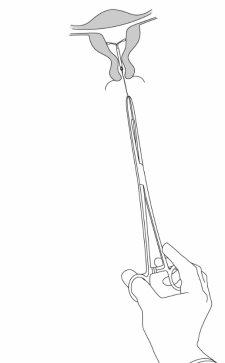
Мирена удаляется, потянув nhẹ за нити с помощью пинцета (Рисунок 8). Новый Мирена можно вставить сразу после удаления. После удаления Мирены необходимо осмотреть систему, чтобы убедиться, что она целая и полностью удалена. |
- Страна регистрации
- Активное вещество
- Требуется рецептДа
- Производитель
- Информация носит справочный характер и не является медицинской рекомендацией. Перед приемом любых препаратов проконсультируйтесь с врачом. Oladoctor не несет ответственности за медицинские решения, принятые на основе этого контента.
- Аналоги МИРЕНА 0,02 мг КАЖДЫЕ 24 ЧАСА ВНУТРИМАТЕРОЧНАЯ СИСТЕМА С ПРОДОЛЖИТЕЛЬНЫМ ВЫСВОБОЖДЕНИЕМФорма выпуска: ВНУТРИМАТОЧНАЯ СПИРАЛЬ, 13,5 мг левоноргестрелаАктивное вещество: plastic IUD with progestogenПроизводитель: Bayer Hispania S.L.Требуется рецептФорма выпуска: ВНУТРИМАТОЧНАЯ СПИРАЛЬ, 19,5 мгАктивное вещество: plastic IUD with progestogenПроизводитель: Bayer Hispania S.L.Требуется рецептФорма выпуска: ВНУТРИМАТОЧНАЯ СПИРАЛЬ, 52 мг / начальная скорость высвобождения 0,02 мг каждые 24 часаАктивное вещество: plastic IUD with progestogenПроизводитель: Gedeon Richter Plc.Требуется рецепт
Аналоги МИРЕНА 0,02 мг КАЖДЫЕ 24 ЧАСА ВНУТРИМАТЕРОЧНАЯ СИСТЕМА С ПРОДОЛЖИТЕЛЬНЫМ ВЫСВОБОЖДЕНИЕМ в других странах
Лучшие аналоги с тем же действующим веществом и терапевтическим эффектом.
Аналог МИРЕНА 0,02 мг КАЖДЫЕ 24 ЧАСА ВНУТРИМАТЕРОЧНАЯ СИСТЕМА С ПРОДОЛЖИТЕЛЬНЫМ ВЫСВОБОЖДЕНИЕМ в Poland
Аналог МИРЕНА 0,02 мг КАЖДЫЕ 24 ЧАСА ВНУТРИМАТЕРОЧНАЯ СИСТЕМА С ПРОДОЛЖИТЕЛЬНЫМ ВЫСВОБОЖДЕНИЕМ в Ukraine
Врачи онлайн по МИРЕНА 0,02 мг КАЖДЫЕ 24 ЧАСА ВНУТРИМАТЕРОЧНАЯ СИСТЕМА С ПРОДОЛЖИТЕЛЬНЫМ ВЫСВОБОЖДЕНИЕМ
Консультация по дозировке, побочным эффектам, взаимодействиям, противопоказаниям и продлению рецепта на МИРЕНА 0,02 мг КАЖДЫЕ 24 ЧАСА ВНУТРИМАТЕРОЧНАЯ СИСТЕМА С ПРОДОЛЖИТЕЛЬНЫМ ВЫСВОБОЖДЕНИЕМ – по решению врача и с учетом местных правил.




